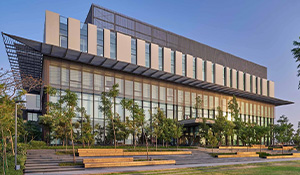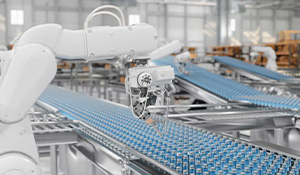Delivering Health. Sustaining Trust.
Nearly 50% of all prescriptions filled in America come from India — the most trusted medicine partner. For decades, Indian manufacturers have worked hand-in-hand with the U.S. to deliver safe, affordable, and quality-assured medicines to millions of patients. This quiet partnership has saved Americans more than $1.3 trillion in healthcare costs over the last decade — while helping families, veterans, and seniors stay healthy and secure.
Indian pharmaceutical companies provide the medicines Americans rely on most:
- 99% of blood pressure medications
- 97% of mental health prescriptions
- 100% of antibacterial treatments
- 70% of respiratory therapies
These are the everyday medicines that keep patients healthy and hospital systems running. And nearly all of them are made by Indian partners committed to patient care and public health.
McKinsey’s 2025 Report: India’s Pharmaceutical Performance
752 FDA-approved sites (highest globally, surpassing the U.S.)
2,050 WHO-GMP certified facilities
50% reduction in FDA Official Action Indicated (OAI) outcomes over last 10 years
India now has fewer FDA OAIs than international sites
99.9%+ right-first-time performance at leading sites using AI/automation
24% increase in labor productivity (2014–2023)
40%+ increase in on-time-in-full delivery vs. 1% globally
#1 globally in 4IR “Lighthouse” pharma sites as of Dec. 2024
India’s Commitment to Quality
India is home to some of the most advanced pharmaceutical manufacturing facilities globally, trusted by global regulators. Today, India operates the largest number of FDA-approved generic medicine facilities in the world — 752 sites as of 2024 — surpassing even the United States. These facilities are regularly inspected and adhere to the highest global standards, ensuring that medicines are safe, effective, and of the highest quality because that is what patients deserve.
Over the past decade, Indian pharmaceutical companies have made substantial investments to deploy cutting-edge systems, automation and AI-driven quality control systems to maintain consistent excellence. This allows companies to manufacture affordable, high-quality generics at scale for patients worldwide.
Indian manufacturers perform on par with their global peers in FDA inspections, according to a recent McKinsey Report, a reflection of industry-wide quality upgrades and a culture of compliance. Many leading facilities use AI-enabled, zero-error manufacturing platforms that deliver over 99.9% right-first-time performance, ensuring American patients receive medicines that meet the highest U.S. standards.
McKinsey’s 2025 Report: India’s Pharmaceutical Performance
752 FDA-approved sites (highest globally, surpassing the U.S.)
2,050 WHO-GMP certified facilities
50% reduction in FDA Official Action Indicated (OAI) outcomes over the last 10 years
India now has fewer FDA OAIs than international sites
99.9%+ right-first-time performance at leading sites using AI/automation
24% increase in labor productivity (2014–2023)
40%+ increase in on-time-in-full delivery vs. 1% globally
#1 globally in 4IR “Lighthouse” pharma sites as of Dec. 2024

The Growing Threat to Patients
Every week, doctors, pharmacists, and families across America face a growing crisis: essential medications are becoming harder to find.
Pharmacy Benefit Managers (PBMs) and Group Purchasing Organizations (GPOs) are blocking access to essential medicines, controlling which manufacturers thrive and which ones fail. These powerful intermediaries have become gatekeepers of the market, making it harder for suppliers to expand and serve American patients.
The outcome? America opens medicine supply to unreliable sources, with more and more medications coming from China.
Proposed tariffs on Indian generics would only make this situation worse, raising costs and worsening shortages. Over 270 medicines are already in short supply across the U.S. today. Tariffs would drive up these numbers, impacting patients nationwide.
The Impact of Cutting off Medicine Access

Adam is a U.S. Army veteran from Fort Benning, Georgia, with deployments to Iraq and Afghanistan. Now a logistics manager and father of three, he takes high blood pressure medication to treat his hypertension.
As a veteran managing a chronic condition, Adam depends on high-quality, affordable medicine made by U.S. allies, not risky alternatives from unreliable sources.

Margaret is a retired nurse and grandmother in rural North Carolina. She now volunteers at her local rural health clinic and helps manage prescription access for uninsured patients.
At the clinic where Margaret volunteers, tariffs on Indian generics could mean turning away patients who can no longer get the medicines they need.
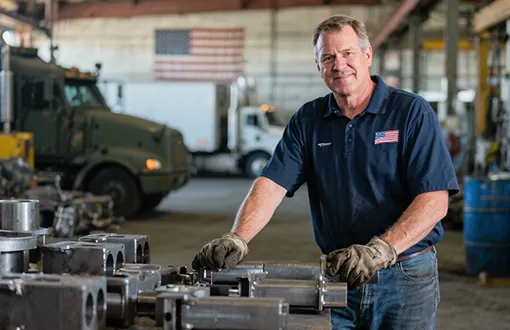
John is a small business owner in Indiana who supplies components to the defense and transportation sectors. He takes pride in building durable products that keep America moving, whether it’s tanks or trucks.
John knows his workers keep America running and they rely on affordable, safe generics to stay healthy and on the job.
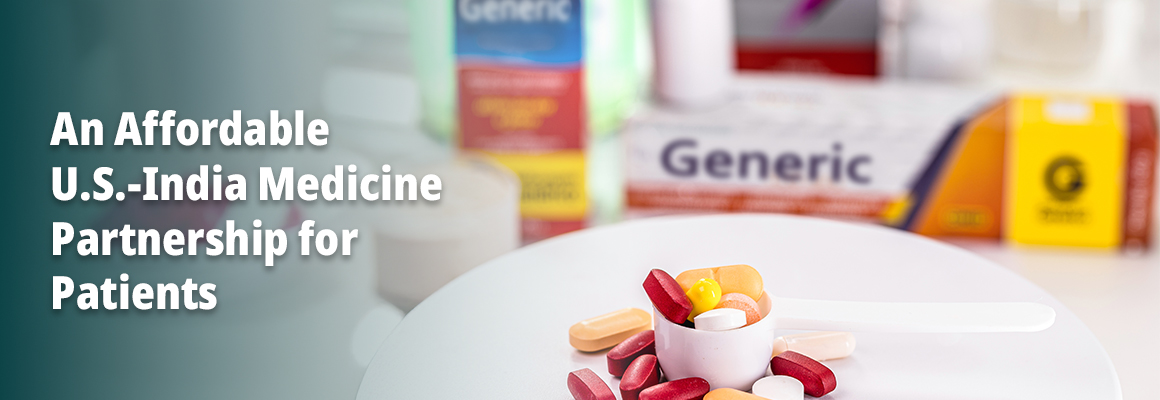
Medicine Security
The United States and India share a common goal: to ensure every patient has access to safe, affordable, and reliable medicine.
Together, through public–private partnerships and mutual trust, America and India can strengthen long-term access to essential generic medicines — not just by securing finished-dose supply, but also the critical inputs that power them: active pharmaceutical ingredients (APIs), key starting materials (KSMs), and drug intermediates (DIs).
By investing in strategic stockpiles and resilient manufacturing arrangements, both countries can proactively guard against future emergencies — from pandemics and hurricanes to geopolitical instability. This partnership reduces reliance on fragile supply chains and ensures a steady flow of the medicines Americans need most.
This is how we secure national medicine supply — by working with trusted allies to de-risk from China and build a more resilient future.
Reform the Market
PBMs and GPOs control nearly every dollar spent on generic drugs in the U.S. But their practices have made it nearly impossible for U.S. manufacturers to compete, while exposing the country to fragile foreign supply chains. Market reform can reduce monopolistic power and increase transparency, ensuring medicines remain affordable and accessible.
The Latest
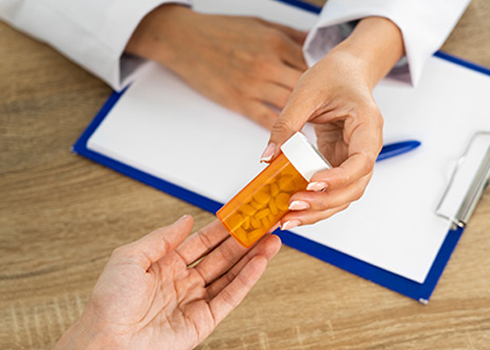
Article 25 July 2025 • 5 min read
Perspective: Generic Prescriptions Are a National Security Asset
Read More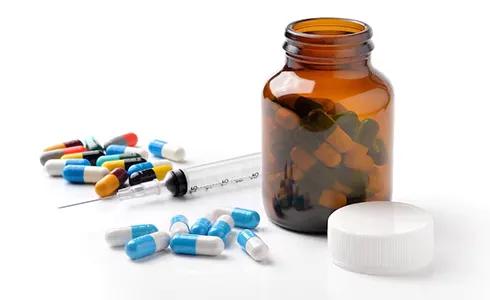
Article 12 Aug 2025 • 9 min read
America’s National Security Depends on Allied Medicine
Over the past decade and more, India’s pharmaceutical sector has become the world’s largest supplier of generic medicines, with exports growing faster than the global average. The industry is at a tipping point, however....
Read More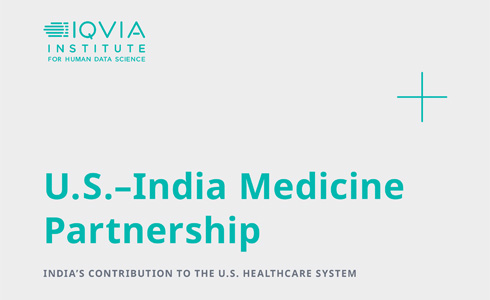
Report 06 Aug 2025 • 5 min read
U.S.– India Medicine Partnership
With the Indian economy growing rapidly, the government has set an ambitious target for the nation to become a $30 trillion to $35 trillion economy by 2047. The pharmaceutical industry....
Read More
News September 4, 2025
Crucial drugs to be more affordable after GST cut
The Economics Times
Read More ›
News July 14, 2025
Patents: Navigating innovation and access in India
The Hindu Business Line
Read More ›
News July 3, 2025
COVID vaccines not tied to sudden deaths: Experts refute Karnataka CM’s claims
CNBC TV 18
Read More ›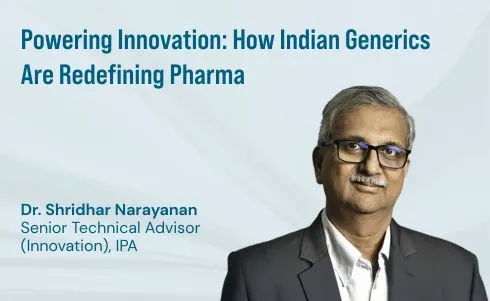
Article August 28, 2025 • 4 min read
Indian Generics Leadership to Power Pharma Innovation
Read More ›
Article August 18, 2025 • 4 min read
The Importance of Balanced Intellectual Property Systems for Patients’ Access to Medicines
Read More ›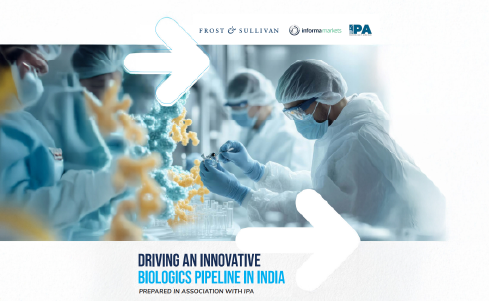
External Study July 1, 2025 • 8 min read
Frost & Sullivan : Driving an Innovative Biologics Pipeline in India
Read More ›
External Study 15 May 2025 • 6 min read
McKinsey: Vision 2030 - Way Forward for Indian Pharma
Over the past decade and more, India’s pharmaceutical sector has become the world’s largest supplier of generic medicines, with exports growing faster than the global average. The industry is at a tipping point, however....
Read More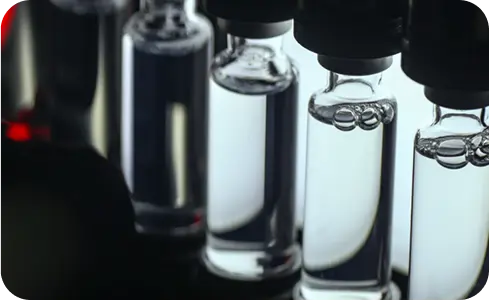
External Study 10 May 2025 • 3 min read
Bain & Co: Healing the World - A Roadmap for Making India a Global Pharma Exports Hub
With the Indian economy growing rapidly, the government has set an ambitious target for the nation to become a $30 trillion to $35 trillion economy by 2047. The pharmaceutical industry....
Read More

